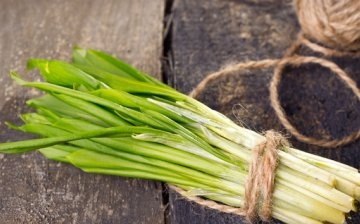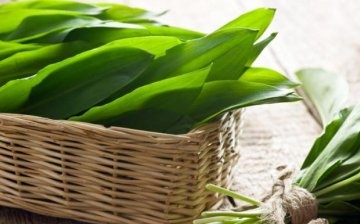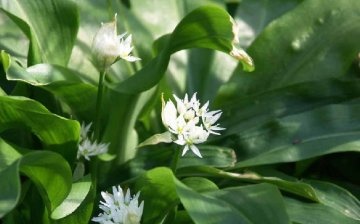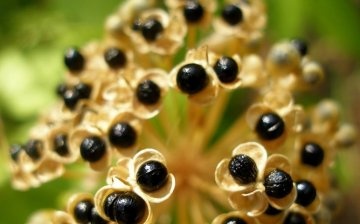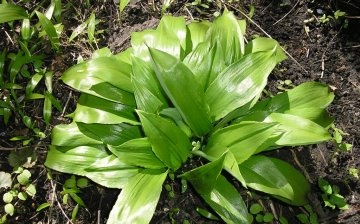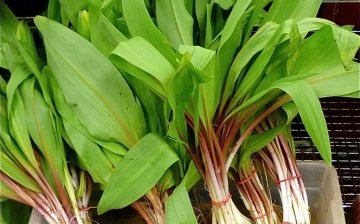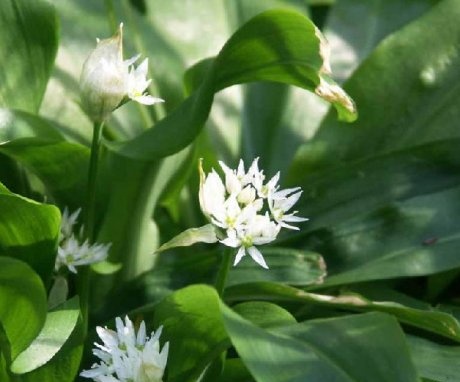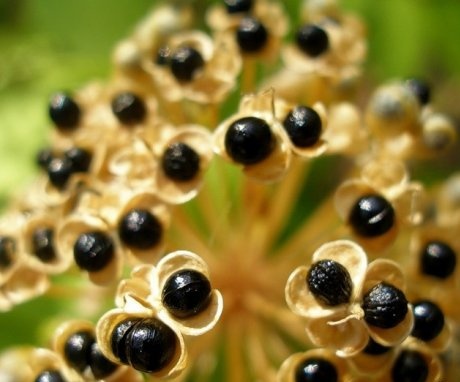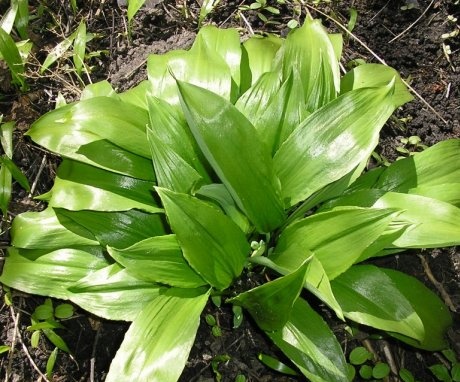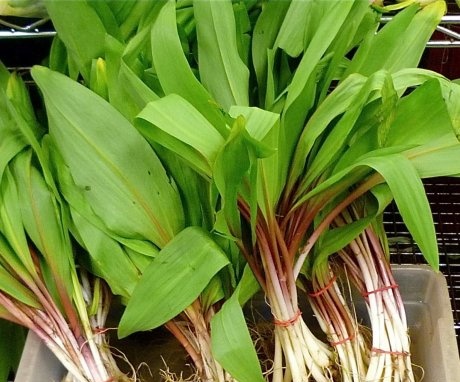Wild garlic: useful properties and features of growing wild garlic
Wild garlic is better known among the people as wild garlic... Although it is a bulbous plant, it has the aroma and taste like ordinary garlic. Gardeners and summer residents fell in love with it for its unpretentiousness and good harvest.
Content:
Beneficial features
Many people use wild garlic as a base for dishes. It can also be pickled, salted and added to salads. And if you collect wild garlic, when it is ripe, and dry it, you can enjoy the spicy taste of a healthy seasoning all winter long. To fortify their diet in the cold season, many housewives freeze this medicinal plant.
Wild garlic is not only used for food, but also used for health improvement.
Ramson has an excellent property to increase appetite, promotes good digestion and activates the gastrointestinal tract in gastroduodenitis, colitis and gastritis. Those who suffer from high blood pressure, respiratory diseases (pneumonia and bronchitis), diseased blood vessels, have problems with the thyroid gland, suffer from obesity and coronary heart disease should pay close attention to this magical plant.
It perfectly helps to cope with all the ailments listed above. Wild garlic has antimicrobial properties due to its valuable composition. Regularly eating fresh wild garlic in food, you can rid your body of parasites. Wild garlic perfectly removes harmful substances from the body along with water, due to its diuretic properties.
Growing wild garlic on the site
For those who are interested in how to grow wild garlic in a garden plot, here are some useful recommendations:
- Before starting to grow, you should choose a place for the future harvest of wild garlic. For this, areas that are in shade are suitable. It is best to plant this medicinal plant near small outbuildings, or rather in their shade. In addition, large trees are suitable for planting wild garlic. The wild garlic will grow and strengthen well under the shadow they will cast.
- Getting down to landing it should be remembered that wild garlic cannot tolerate bright light and direct sunlight. In this case, the plant grows small, with a mild taste.
- This culture is very fond of frequent watering and weeding.
- It is best to choose a loose soil, necessarily slightly acidic or neutral. Ramson does not like sour soil very much. The plant is neutral to clay and sandy soil.
- When planting wild garlic, summer residents should remember that this herb does not tolerate strong moisture. Despite the fact that wild garlic loves frequent watering, it is better not to pour it all the same. Otherwise, the roots may rot and the plant will die. Everything is good in moderation.
Reproduction
Usually wild garlic is propagated seeds or bulbs. The first method is preferable, since when propagated by bulbs, only one wild garlic plant will grow from it alone. To get a good harvest of wild garlic on your site, you need to start with the smallest - choose good the seeds... To do this, you should carefully examine the future garlic from all sides.
The seeds should be slightly round and smooth to the touch.
If you come across shriveled ones, you should not buy them, since they will not germinate. It is easier for those summer residents and gardeners who already have wild garlic growing on the site. They can get the seeds on their own without any problem. To do this, in the middle of summer, it is necessary to remove the wild garlic seed pods that have already begun to turn yellow. You need to tear them off faster, while the shell has not hardened yet. Otherwise, it will be problematic to pull out the seeds. You need to pour them out of the box and let them dry well. These seeds keep well in a dry, dark place until next planting.
How to plant in spring:
- It is necessary to prepare seeds (stratify) - put in containers in which wet sand is poured and slightly freeze. The cold temperature should be between -1 and -3 degrees. Without this procedure, there will not be a good harvest, since the first shoots of wild garlic will appear only after 12 months.
- After about a year or two, the leaves of wild garlic harden, and after that they can be transplanted to a new place where they will grow constantly.
How to plant in autumn:
- First you need to make not very large grooves in the ground in rows.
- The depth of each is no more than 5 cm.
- If you sow seeds randomly and not in furrows, there is a danger of rainwater washing away.
- Wild garlic is sown at the rate of approximately 10 g per sq. m. If very few seeds were purchased, you can simply sow them in seedling pots, and then bury them in the ground.
Correct care
Ramson does not require much leaving, it is enough to regularly moisten the soil layer, especially after the plant has been planted. The soil under the wild garlic is loosened, but not too deeply, mulching with humus from the leaves. It serves as an excellent source of minerals for crops and perfectly retains moisture in the soil, preventing the wild garlic from drying out.
Hatched seedling needs periodic organic fertilization. If there is no humus, it will be successfully replaced by standing manure (just not fresh, the plants may die!), For example, bird droppings diluted with water in proportions of 1 to 10. If not chicken droppings, you can fertilize the ground mullein with water in a ratio of 1 to 20. Wild garlic must be constantly weeded from weeds... The worst enemies of this plant are wheatgrass and nettles, which can pierce it with their roots.
Shoots of wild garlic are often susceptible to such misfortune as the larvae of a miner fly. These insects make small tunnels for themselves in the leaves of the plant, making them unfit for food. To scare off these pests, you need to dissolve ordinary salt in proportions of 50 g per bucket of water.
Another nuisance that can appear on wild garlic shoots is rust.
She can get it from plants in the neighborhood. To get rid of it, you should plant the plants so that they do not adjoin each other closely. Leaves that are already infected must be pulled out and destroyed so that the whole plant does not get sick. In order to reanimate wild garlic, you need to prepare a special mixture that will help save the infected plant:
- It consists of copper oxychloride, which must be dissolved in water in a ratio of 1 tbsp. l. 10 liters of water.
- Add 2 tbsp to the same mixture. l. finely planed laundry soap.
- Ramson sprayed just twice, which will be enough to get rid of the rust.
Processed plants should not be eaten for at least two weeks. After that, the leaves of wild garlic are thoroughly washed. You cannot keep wild garlic in one place for a long time. Therefore, every 7 years it should be transplanted to a new site.
When to harvest
Usually, already in the third year after planting the plant, you can enjoy the first harvest.The two upper leaves must be carefully cut off with a knife, and the third leaf, which is at the bottom, is left. This is necessary so that wild garlic can recover faster and give new shoots.
Experienced gardeners know that the most delicious wild garlic is harvested in April.
It was at this time that its leaves are most rich in trace elements, minerals and essential oil. The taste of young wild garlic is very delicate and not harsh. This method has one drawback - the earlier the harvest of wild garlic is harvested, the more time it will take for the plant to recover.
In adult plants, all available leaves are removed, since no special efforts are required for their restoration and growth. The only rule here is not to do this every year, otherwise they will not have enough strength to grow. Knowledgeable gardeners always plant both young and mature garlic, so that it is always in stock. Correctly following all the recommendations, you can achieve a very high yield of wild garlic and delight yourself and your loved ones with the taste of a fragrant healthy plant.
More information can be found in the video.



